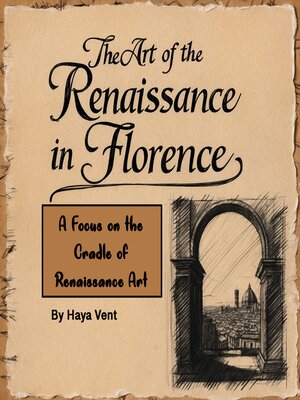The Art of the Renaissance in Florence
audiobook (Unabridged) ∣ A Focus on the Cradle of Renaissance Art
By Haya Vent

Sign up to save your library
With an OverDrive account, you can save your favorite libraries for at-a-glance information about availability. Find out more about OverDrive accounts.
Find this title in Libby, the library reading app by OverDrive.



Search for a digital library with this title
Title found at these libraries:
| Library Name | Distance |
|---|---|
| Loading... |
The Renaissance, meaning "rebirth," emerged in Florence during the late 14th and early 15th centuries, marking a profound shift in European art, culture, and intellectual thought. This period saw the transition from the rigid structures of medieval society to a new age of discovery, individualism, and artistic innovation. Florence, with its flourishing economy, influential families, and deep appreciation for classical antiquity, became the epicenter of this cultural revolution.
One of the defining characteristics of the Renaissance was the revival of Greco-Roman ideals, particularly in art and philosophy. Scholars and artists turned to ancient texts and sculptures, drawing inspiration from their emphasis on balance, proportion, and realism. The rediscovery of these classical principles was largely driven by humanism, a philosophical movement that placed humans at the center of intellectual and artistic endeavors. Unlike the medieval focus on religious symbolism and rigid iconography, Renaissance artists sought to depict the world with greater accuracy, incorporating depth, movement, and emotion into their works.
Florence's economic prosperity played a crucial role in this artistic revival. The city was a thriving center of trade and banking, dominated by powerful merchant families such as the Medici. Their immense wealth allowed them to become the foremost patrons of the arts, commissioning works from some of the greatest painters, sculptors, and architects of the era. Through their support, Florence became a hub of creative activity, attracting talented individuals who sought to experiment with new artistic techniques.






